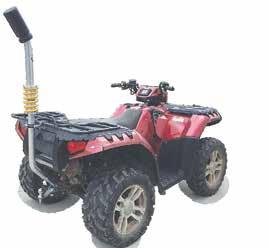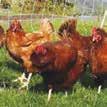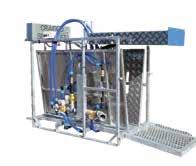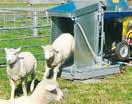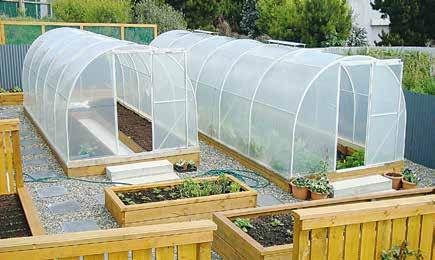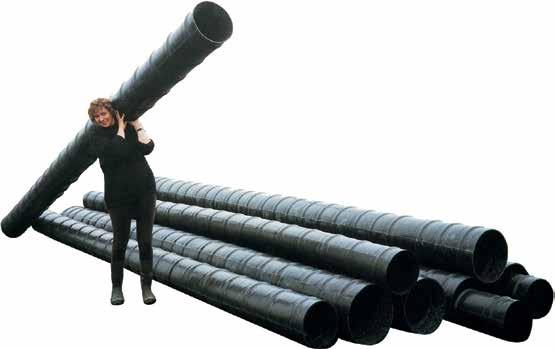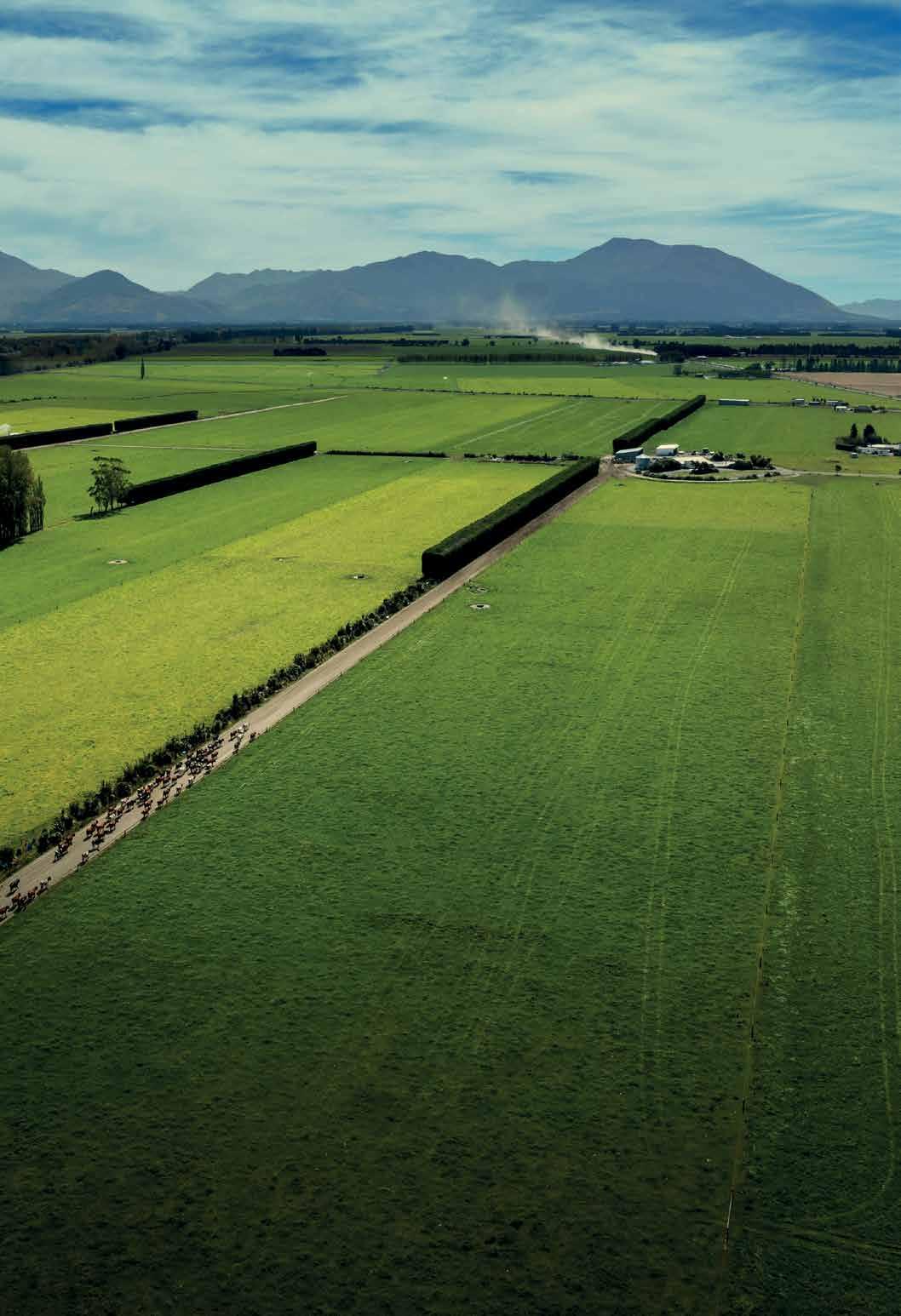






NORTH ISLAND maize grain growers are facing an uncertain future in 2025 as the country’s energy crisis hits the rural sector.
The situation is so serious that Federated Farmers recently brought all the interested parties – farmers, seed companies, grain merchants and rural contractors – together to discuss what to do next. The Government has also been briefed.
Maize grain is a common supplementary feed in the dairy industry, but is also used for producing corn chips, starch and as a poultry feed.
The problem, according to head of Federated Farmers arable group, David Birkett, is that maize grain must be dried to get it down to a moisture level of 14%.
He says in the North Island the grain is dried off-farm at special drying facilities (and not on farm) and that gas is used to do this. He says there is uncertainty about whether there
Mid-Canterbury farmer Syd Worsfold was recently inducted into the NZ Arable Hall of Fame. A 40-year veteran of the industry, Worsfold holds the record as the longest-serving United Wheat Growers director. He was recognised for what the judges called his “lifelong enthusiasm, commitment and support for all things arable”. Story p 18.
will be the gas to dry the grain in the first place, and if there is, what will be the cost of this. “At this stage no-one knows what the position will be next year and that is creating huge uncertainty for potential maize grain growers,” Birkett told Rural News It should be noted that those affected are farmers who grow maize for grain and that those who grow maize silage are not affected. Roughly half the maize grown in NZ is for grain and the other half for maize silage. He says given that the past season
for maize was something of a disaster, most are apprehensive about what might happen in 2025. He says it’s highly unlikely that a farmer will grow a maize crop without a contract and he’s predicting the maize grain crop will be down next year. But he adds the maize silage crop will remain about the same as usual.
“We have also briefed central government on the issue but have had little response and it would appear that they are taking the view that this is a case of the market doing what it
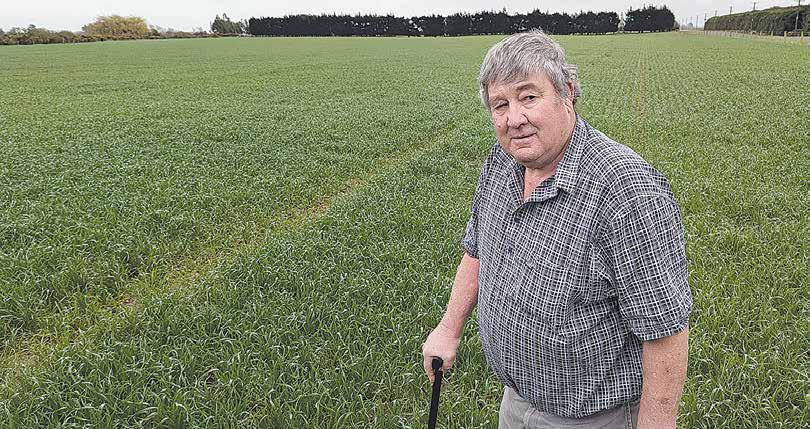

does,” he says.
But Birkett says the issue is a serious one with implications right across the primary sector. He says if less maize is planted it has implications for rural contractors, among others.
“This is not just about farming – it’s something of national importance that needs to be sorted out,” he says.
In the North Island, maize grain is usually harvested between April and June and hence is damp when harvested. Normally the companies that put out contracts with farmers to grow the grain know the cost of drying the grain and this is included in the contract price they are offered prior to planting the crop. But for the coming season, the situation is different, according to Birkett.
“Given the uncertainty, companies are reluctant to give out contracts. That’s because the cost of drying the grain is a significant component in setting a price to sell the grain on the open market,” he says.
Birkett says as planting time looms, there is a suggestion that companies may offer contracts, but these will contain a special clause separating out the drying component to be determined later. Such a move will hardly give much certainty.
Burkett says the situation in the South Island is different because growers there have their own drying facilities and that these are generally powered by diesel. David Birkett adds that very little grain maize is grown in the South Island. On his farm at Leeston in Canterbury, he mainly grows wheat and barley.

HEAD OFFICE
Lower Ground Floor, 29 Northcroft Street, Takapuna, Auckland 0622
Phone: 09-307 0399
Fax: 09-307 0122
POSTAL ADDRESS
PO Box 331100, Takapuna, Auckland 0740 Published by: Rural News Group Printed by: Inkwise NZ Ltd
CONTACTS
Editorial: editor@ruralnews.co.nz
Advertising material: davef@ruralnews.co.nz
Rural News online: www.ruralnews.co.nz
Subscriptions: subsrndn@ruralnews.co.nz
SUDESH KISSUN
sudeshk@ruralnews.co.nz
THE OUTLOOK for dairy farms this season is better than anticipated.
DairyNZ’s latest farm financial forecast on the Econ Tracker shows the national breakeven forecast sitting at $8.09/kgMS, while the forecast average payout received has increased to $8.84/ kgMS. Fonterra is forecasting a midpoint of $8.50/kgMS.
While farm working expenses increased slightly, driven by increases in key operational areas such as electricity, irrigation, wages, and repair and maintenance costs, the reduction in interest and increase in farmgate milk price significantly outweigh these minor increases, improving the overall financial position of most farmers, says DairyNZ, Waikato Federated Farmers executive Garry Reymer agrees that dairy farmers are feeling better.
He told Rural News that most have come through winter well and started the season milking better than last season. “Add to that the improved milk price and falling interest rates,
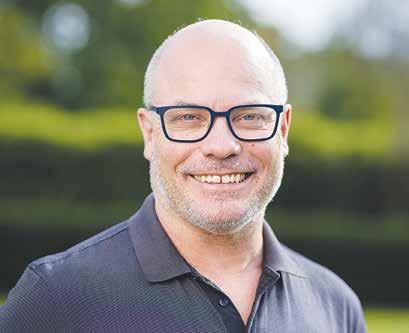
you can see why there is a bit of optimism,” he says.
However, Reymer cautioned farmers not to get too excited yet and don’t spend their money before it’s banked.
“The new advance rate schedule that Fonterra has put out means there won’t be a lift in the milk price to top up the milk cheque through most of
the summer, right through to July.
“With the volatility around geopolitics, things could change very quickly. I would also urge farmers to take a good look at what makes up their costs.
“If they are relying on just interest rates to keep them in the black, I would suggest they look at their farm system. On the flip side, many businesses are
also under pressure and good deals can be had if you shop around. This can be good but also remember that loyalty can also buy service when you need it.” On interest rates, Reymer is urging farmers to keep the pressure on their banks.
“But make sure you make a compelling case for a better rate. Know your numbers, have a plan that you can fully articulate, show the bank you are in control of your business and that your business is not controlling you.”
With a lot of attention around the interest rate changes in recent months, the September 2024 quarterly update of the Econ Tracker provides a deeper analysis into what interest rate changes and timings could mean for dairy farmers this season, says DairyNZ’s head of economics, Mark Storey.
“The alternative scenarios we explore show how the timing of interest rate reductions can influence the discretionary cash position of farmers. We see clearly that earlier rate cuts would result in greater cost savings and a stronger cash position, compared to reductions made later in the season,” says Storey.
PETER BURKE
peterb@ruralnews.co.nz
A BLOODY tough year for sheep farmers, but the worst may be over, and the future looks optimistic.
That’s the assessment of Meat Industry Association (MIA) chair Nathan Guy following the release of its annual report last week.
The report is anything but glowing on events in the past year which saw red meat exports in the 12 months from June 2023 to 2024 fall by 7% to $9.9 billion. The report also noted that exports to NZ’s biggest market China fell by 32% to $2.86 billion. But on the positive side, exports to the
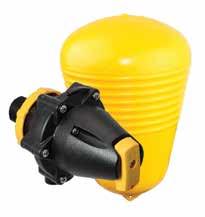

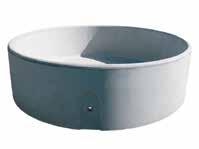
US were up and exports to the UK recovered from low levels in the previous year.
In his forward to the report, Guy noted that the red meat sector continues to be tested on all fronts and is not helped by a complex geopolitical environment, increased competition in key markets and changing spending habits of consumers.
“China has been more depressed as a market than anyone thought it would be and the Covid lag has taken a longer time than expected to work through. There are 42 countries now who have similar free trade access to China as NZ and it’s a very congested market,” he says.

But despite the rather bleak news, the ever-optimistic Guy says there are many positives emerging and he believes the worst is over.
“There are what I call some ‘green shoots’ appearing, such as improved beef prices and a sense that lamb will come back. I am optimistic that we have bounced off the bottom,” he told Rural News.
Looking to the future, Guy says the first thing that needs to happen is to get costs behind the farm gate reduced.
He says sorting out the issue of climate change and the lowering of the official cash rate (OCR) are key factors. The other issue related to cli-
mate change, he says, is to get the settings right and stop the proliferation of pine trees which is to the detriment of the red meat sector – taking land that should be used for livestock production.
“Stock numbers has always been an issue for the meat companies and NZ. There needs to be sufficient capital stock to produce the offspring that is going to go through the works. This is not a new issue and is a concern, but companies are nimble and have dealt with this before,” he says.
Labour is also signalled in the MIA annual report as an issue, with immigration settings for overseas workers an ongoing problem.


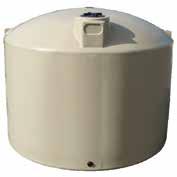
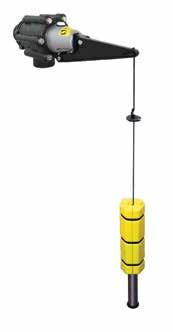
LAST WEEK’S approval of a recapitalisation plan for troubled milk processor Synlait is good for Canterbury and gives farmer suppliers a lot of security going forward, says farmer Willy Leferink.
However, the Ashburton-based former Federated Farmers dairy chair believes it’s now up to the company board and management to come up with a sound business
plan that will make farmers change their mind and withdraw cessation notices filed earlier this year.
While Leferink says that while he can’t speak for the other 280 farmer suppliers, he will look at what the Synlait farm supply team has to offer.
“Some farmers are still bitter around what they were paid last season, and they will be looking at the repair work Synlait does. It’s up to the farm supply team how they create loyalty with farmers.”

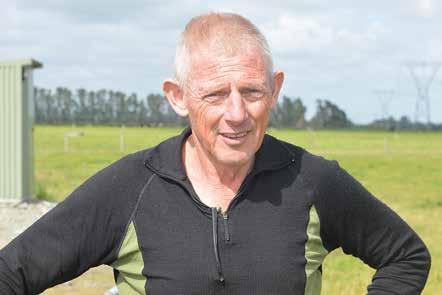
In June, Synlait announced that many farmer suppliers had handed in cessation notices. Under Synlait’s milk supply agreement, the cessation period is two years, so farmers would have to issue cessation notices by May
31 next year to end their supply contract on May 31, 2026.
Leferink says Bright Dairy of China, which will own 65% of Synlait from October 1, is an impressive dairy player and has been around for over 100 years.
He says the decision to recapitalise Synlait and save the company from collapse is good for the region and for competition with major players like Fonterra.
Leferink, who attended the special shareholders meeting
last week, says while not everyone is happy with the outcome, it is what it is.
Synlait shareholders voted in favour of an equity raise by issuing extra shares to major shareholders Bright Dairy and a2 Milk Company. Bright chipped in $185m and a2MC $32.8m.
Under the deal, the extra shares resulted in Bright increasing its stake to 65% and a2MC maintaining its 19.8% stake. However, minority investors’ overall stake in the company will reduce from 41.2% to 14.9%.
In the end, more than 90% of votes were cast in favour of the three resolutions for Bright and a2MC to put in the new money and to amend the firm’s constitution.
IS CHINA’S appetite for dairy back on the rise?
Last week’s Global Dairy Trade (GDT) auction saw an increase in Chinese demand for skim milk powder.
Westpac Kelly Eckhold says this was interesting given weaker demand from China in hard commodities and oil.
“Chinese demand increased again – especially for skim milk powder. This is interesting given the generally weak
economic data seen of late and weaker demand from China in hard commodities and oil. Westpac reduced its Chinese growth forecast for 2025 and 2026 this month to 4.5% for each year,” says Eckhold. He says conditions in the dairy sector continue to look positive.
“It remains to be seen how durable the recovery is given the uncertainties on Chinese growth and demand. However, interest rates are now falling which

will further assist on-farm costs going forward,” he says.
NZX dairy analyst Rosalind Crickett notes that whole milk powder (WMP) rose 1.5% to settle at US$3,448/t. Skim milk powder (SMP) also rose 2.2% to reach US$2,809/t, its highest average price on the platform in the last 12-months.
“Factoring market sentiment, the increased demand for both milk powders is not surprising – given the off-peak of

Bright Dairy representative Julia Zhu expressed its confidence in Synlait.
“Our decision to participate in this process has been about protecting the long-term value of Synlait and further reflects the scale of our commitment to see it rebuild stronger, while restoring farmer supplier confidence over coming years,” she says.
Synlait chair George Adams says this was a watershed vote for Synlait.
“Shareholders have given us the opportunity to create a positive future for the company, its investors, farmer suppliers, customers, suppliers and for our 1400 employees.
“Thank you for your support.”
milk production in the Northern Hemisphere combined with factors such as the bluetongue virus which has been increasing in prominence in both the UK and Europe.”
Fonterra will announce its annual results this week and is expected to give an update on its forecast milk price for the season, currently at a mid-point of $8.50/kgMS.
@rural_news
facebook.com/ruralnews

PADDY BOYD, the new chair of Deer Industry New Zealand (DINZ), says his priority is to make sure deer farmers are engaged and provide them confidence to grow.
“That’s what we’ve got to do. We’ve got to grow this industry,” Boyd told Rural News.
“We just want to make sure that we’re all here, driving the same way. So, it’s about engaging the farmers.
“That is a priority of mine, to make sure that farmers stay informed.”
Boyd says part of that push was that DINZ has appointed a new communications manager to make sure there was “really good communication” coming back from the market to the farmers.
It also has a new
CEO, Rhys Griffith, with 14 years’ experience in velvet and venison marketing.
DINZ governance was recently upended with the dropping of the incumbent chair, Wanaka deer farmer and veterinarian Dr Mandy Bell (who was also acting as the interim CEO at the time). The board is made up of eight members, four appointed by producers through the New Zealand Deer Farmers Association (NZDFA) Selection and Appointment Panel, and four appointed by processor/exporters. Bell lost her place on the board when her slot came up for rotation and the panel chose veteran deer industry professional John Tacon instead.
Boyd, who himself served on the selection panel before joining the board about a year ago,
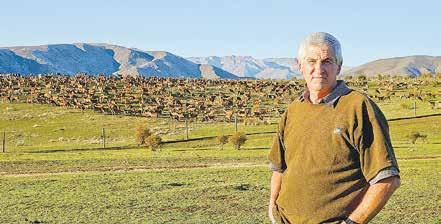
said that the selection panel’s discussions were all about what director skill set is needed on the board at any one time.
He paid tribute to Bell as “a very clever lady” who had the full support of the board in implementing a well-designed and new strategy, which was all about getting product recognised by a much bigger and more diverse market than it had aimed at for the previous 20-plus years.
THE SMALL east coast township of Wairoa is still waiting for an apology from the Hawke’s Bay Regional Council (HBRC) following the devastating floods which hit the town in June and damaged hundreds of houses.
While the damage was mainly in the town, the floods also affected services to the large farming hinterland.
The people of Wairoa have blamed inaction by HBRC for the disaster and feelings against the regional council are still running high in the township.
Wairoa Mayor Craig Little told Rural News that people in the town still don’t feel the council is listening to them. He says HBRC haven’t admitted they have done anything wrong and therein lies the problem. “When you have done something wrong you have to acknowledge that and then talk to the people you have really hurt and who are suffering – and they haven’t done that yet.
“So, they must start looking at themselves and start dealing fairly and honestly with the people in our community and they haven’t done that,” he says.
Little’s comments follow the release of an independent report by former Police Commissioner Mike Bush about what happened during the June floods. He says the town was already grieving the damage wrought by Cyclone Gabrielle and adds that the somewhat sinister river mouth looms over the town. – Peter Burke
MAYOR CRAIG Little says things are still not back to normal for farmers in his district and they are still suffering from problems caused by Cyclone Gabrielle.
He says there hasn’t been a lot of assistance from central government and the district has failed to get some of the funding it hoped it would get. He says there have been some small grants and Federated Farmers have helped by giving farmers fence posts, but adds that more help is needed to restore positivity.
“The farmers in remote areas are really struggling because the only access they have to their farms amounts to nothing more than a goat track,” he says.
The other problem remains the road between Wairoa and Napier which is still being repaired and nine sets of traffic lights control the one-way sections of the road.
Little says this is having an adverse effect on farmers trying to get stock down to Hawke’s Bay.
“Normally the local trucking firm could make two full trips a day. Now they are losing half a day with the roadworks and the cost of this will hit farmers,” he says.
A sheep and beef farmer himself, Little claims to have had a “lucky break”. This turns out to be the fact that he’s broken his leg in a fall and is being forced to work from home and rest up a bit. He says he’s sold his breeding cows and is now trading stock and moved to self-shedding sheep to make life a bit easier for himself and his wife.
But like all sheep and beef farmers, the situation is challenging for Little and his fellow farmers.
“But fresh minds make gains. There’s no doubt about that.”
Meanwhile, the deer velvet market has had a boost, with new protocols agreed with China for the export of frozen unprocessed (‘green’) velvet.
South Korea is the biggest market for velvet but much of it goes via processors in China. Very little is processed here, but the Chinese were threatening to stop the trade.
Boyd said working with both New Zealand and Chinese regulators to draw up the new protocols was one of the biggest things he was involved with as a board member over the last year.
They have secured agreement for the November 2024 to 2025 season but now want to secure 2025/2026, he said.
The protocols have all been drawn up but a formal signing ceremony
isn’t expected until later in the year.
“It’s been a very nervous time for the velvet growers, to be honest.”
On venison, which is mostly exported to Europe, especially Germany, Boyd says Covid hit hard because much of the meat went into the restaurant trade, which closed across the world.
“We’ve refocused ourselves a little bit, started to look at markets that are some retail, as well, just to give us further options.
“There’s a quite a big change now, going into North America and the Netherlands, and a few other countries that are that are consuming out of season as well.
“The venison market is looking really, positive. And it’s more about being able to use more of the carcass instead of just
the top-end cuts. A lot of the American market is ground.”
With a lifetime of involvement in the deer industry, from the days of shooting, then later capturing, feral deer, Boyd is the manager of the 22,000ha Haldon Station, on the shores of Lake Benmore, where he has worked for 43 years. It currently runs 7000 deer, 14000 sheep and about 1800 cattle.
Boyd and his family also run 250 deer on their 40ha near Pleasant Point.
He says it’s still a young industry with a lot of potential for genetic improvement in the national herd.
“It has been going on with cattle and sheep for years, but we’ve still got quite a long way to go. We’ve made big gains but there’s still plenty of room yet.”
Bred for high performance and ‘cast iron’ constitution
We deliberately challenge our Romneys by farming them on unfertilised native hill country in order to provide the maximum selection pressure and expose ‘soft’ sheep.
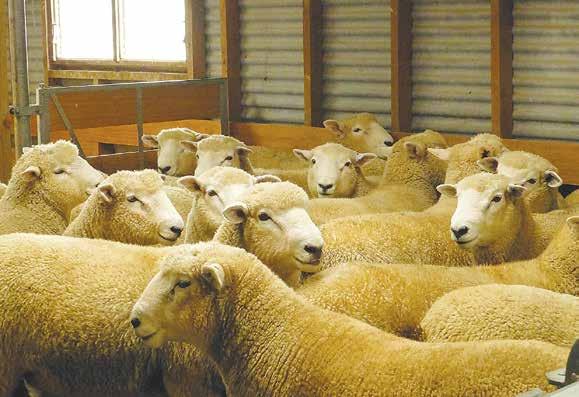
Over the last 20 years ewes (including 2ths) have scanned between 185% and 210% despite droughts.
Over the same period weaning weights (adj. 100 days) have exceeded 36kg from a lambing % consistently above 150%.
• All sheep DNA and SIL recorded.
• Ram hoggets have been eye muscle scanned since 1996. IMF scanned since 2023.
• Ewe hoggets have been mated (to Romney sires) for over 20 years.
• Breeding programme puts an emphasis on worm resilience - lambs drenched only once prior to autumn. FE tolerance introduced more recently.
• Scored for dags and feet shape. Sires DNA rated for footrot and cold tolerance.
• We are ‘hands on’ breeders with a focus on detail and quality.
• We take an uncompromising approach - sheep must constantly measure up.
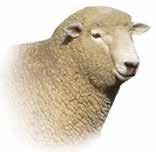

Take the risk out of your pasture renewal – and get the best returns – by sowing a proven, quality product from Barenbrug. Ask your reseller, or learn more at barenbrug.co.nz/cheaper-isn-t-better
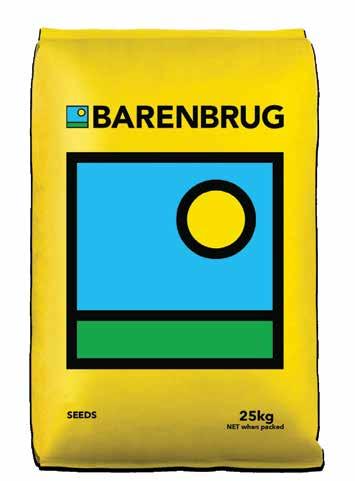
Supercharged with NEA12, Shogun is the pace-setter in 1-3 year pasture. Shogun NEA12
The phenomenal 3-5 year pasture, delivering performance your neighbours will envy. Forge NEA 1-3 years 3-5 years
Perennial
Next generation perennial, our ‘go to’ grass for superior persistence & summer growth. Maxsyn NEA4
The superstar perennial, delivering high intake, yield, N uptake & persistence. Array NEA2 Perennial
The benchmark in tetraploid perennials, it’s easy grazing & better for the environment. 4front NEA2
THE DAYS of high quality, ambitious comprehensive Free Trade agreements (FTAs) are over, says Trade Minister Todd McClay.
Speaking to Rural News at a Meat Industry Association (MIA) function in Wellington last week he says he’s no longer using the word ‘free’ and instead is just talking about ‘trade agreements’ – a subtle but very significant nuance.
He says the notion of an FTA is a “fairly old” concept that was relevant in the heady days of trade liberalisation, but is not relevant in the new global context where there is greater emphasis on protectionism in trade.
McClay says the new order is demand-

ing that NZ take a more aggressive, politicallyled approach to opening opportunities for Kiwi exporters. He says it’s similar in some ways to the 1970s and ‘80s when Britain joined the then EEC and NZ had to quickly find new markets for its primary produce.
In those days there was a flurry of politicians heading to the UK, Europe and other parts of world
to get new deals.
“The situation now is that we have got to put the effort in, show up and convince people about the benefits of trade and doing deals with NZ.
“If we sit at home leaving it to officials and hoping it will happen, inevitably we will get passed by.
“So, you have seen the Prime Minister and Deputy Prime Minister
TODD MCCLAY says the Chinese market remains soft and consumers are more cautious in their buying patterns, but he says there are still many opportunities for New Zealand. He says the situation has changed from when NZ got its initial FTA with China in 2008, with many more countries now having deals with the Chinese.
“The Government has now adopted what we call a ‘China and’ strategy, which means that we are still focused on China but are putting an equal effort into other key markets such as the US, the UK, Europe, the Middle East and Southeast Asia. The aim is to open as many doors as possible for our exporters,” he says.
out on the world stage a lot looking for opportunities and opening doors for our negotiators, so that our exporters to be able to do more business,” he says.
A major strate-
McClay says he plans to go to China again at the end of the year and says he’s impressed with the work that NZ meat companies are doing to deal with the new demands of consumers. These demands revolve around the fact the most Chinese live in small apartments with limited cooking facilities and want high quality, ready-to-produce meals.
“I was up there earlier in the year to launch a new product on behalf an NZ meat company which is burger that is ready to eat. You simply put it in the microwave, and it comes out looking the same as if you had made it yourself or purchased it from a shop,” he says.
McClay says the value-add
was done in NZ and the product commanded a premium price – this is just one example of the good work our meat companies are doing. The other positive for NZ, says McClay, is that our animals are grass fed. He says the days are gone when the virtues of grain-fed beef were being extolled, and consumers –especially in Asia – now like the fact that our animals are effectively ‘free ranging’. They like the way we treat our animals and the healthy nature of the feed they receive.
“If we can get the ‘grass fed’ message across effectively, there is a real opportunity for us to steal a march on the rest of the market in that space,” he says.
gic target for the Government is India, says McClay. He says in the past nine months he’s had five meetings with his counterpart in India and they now have a very constructive relationship. He says there are many things that NZ can do with India.
“We are now talking [about] how we can boost trade with India before we start talking about the architecture of what any trade deal may look like. But whatever we do, the primary food and fibre sector has to be an important part of that and the deal has to be meaningful, and India knows that.”
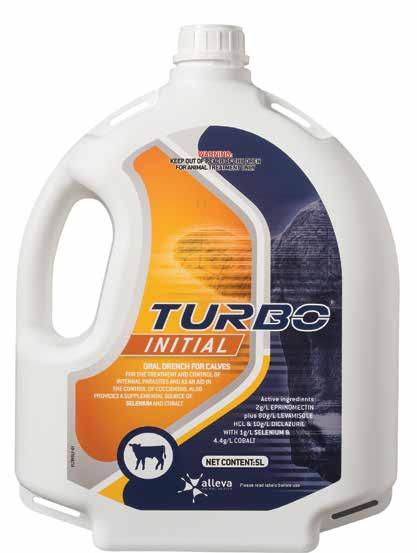

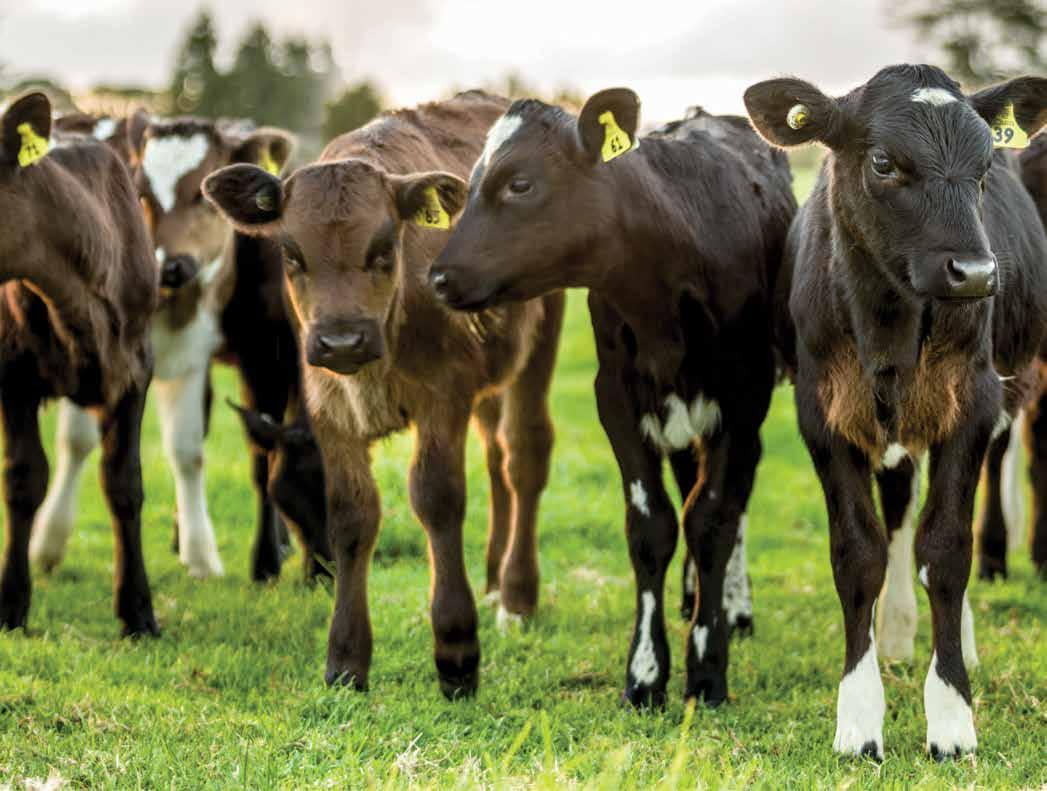




NEW ZEALAND farmers could have access to low methane elite genetics by 2026.
Herd improvement company LIC says this would have the potential to make a real difference to farmers by helping to ensure emissions reductions don’t come at the cost of reducing milk production. The farmerowned co-op has been working with partners to breed a low methane cow.
In its sustainability report for year ending May 31, released last week, the co-op says its methane research programme, in collaboration with CRV and Pāmu (formerly Landcorp) and with funding from the NZ Agricultural Greenhouse Gas Research Centre (NZAGRC), is progress-

ing well.
“We continue to investigate the link between methane emissions from bulls and their offspring, with the intention of breeding more climatefriendly cows that produce less methane,” it says.
The programme is now in its fourth year.
“We initially found that a bull’s genetics do play a role in how much methane they emit. The
lowest bulls in the trial emitted around 15-20% less methane than the average, after accounting for food eaten.
“Last year, these bulls were mated with heifers from Pāmu farms and we are now testing the methane emissions from these offspring to ensure the genetic variation is representative of their fathers, and will report on these results in the coming year.
“We hope to produce a methane breeding value and give dairy farmers the opportunity to access low methane elite genetics by 2026. This has the potential to make a real difference to farmers by helping to ensure emissions reductions don’t come at the cost of reducing milk production.”
LIC says it’s always looking at how to innovate and provide farmers
with a range of products to help them solve climate change challenges.
“The successful programmes we have built with our partners are enabling us to make significant progress towards achieving our commitment to help farmers reduce emissions on farm.”
LIC is also developing a genetic solution for heat tolerance, aiming to provide New Zealand
farmers with high genetic merit dairy cows with improved heat tolerance.
Heat stress has significant welfare implications for animals. For dairy cows it can also impact feed intake, milk production, fertility and calf birth weight. LIC says introducing the ‘slick’ gene into the country’s dairy herd could allow for a significant improvement in dairy cow performance in hotter temperatures over the long term.
“We have completed a climate-controlled study on calves, which was a follow-on from a pilot trial conducted last year to test the response to cold stress. This trial had positive results, showing no significant difference in response to colder conditions between slick calves and non-slick calves.”
LIC chair Corrigan Sowman notes that the dairy sector needs to continue to evolve – for climate change and because of it – and therefore the production efficiency of the national herd has never been more important.
Sowman says efficient cows produce more milksolids/kg of feed eaten, have a fertility advantage and have a lower emissions footprint per kilogram of milksolids.
“Farmers consistently using our genetics are breeding genetically superior animals, and at a faster rate. In fact, longterm users of LIC genetics have continued to double the rate of genetic gain in their herds over the last 10 years. These gains are cumulative and permanent, delivering long-term benefits into the future.”

Our portfolio of powerful, proven products has helped farmers from one end of the country to the other create and maintain thriving businesses, and has earned us a reputation as New Zealand’s arable protection specialists.
Our suite of innovative crop protection solutions provide local farmers with everything they need to win the war on weeds, pests and diseases. Visit corteva.co.nz to view our range of online arable resources.
SUDESH KISSUN
ENVIRONMENTAL Protection Authority (EPA) says it is aware of the concern around paraquat use being linked to a potential risk of Parkinson’s disease.
“We reassessed paraquat in 2019 and brought in strict rules and safety guidelines to avoid any potential impacts on people and the environment,” the EPA told Rural News
“Since then, we have continued monitoring for any new information that might prompt us to look again at paraquat. We are always evaluating information about the potential risks posed by chemicals being used in New Zealand, and this informs what actions we might take.”
The EPA comments come as a debate in Australia over the use of herbicide paraquat and its possible link to Parkinson’s disease has caused ructions within their national farmer lobby.
State-funded national broadcaster ABC recently ran a story detailing a cluster of Parkinson’s disease cases in a Victorian farming community.
The family featured in the Landline program came under attack from some farm group leaders.
The ABC also claimed that National Farmers’ Federation, the peak farmer body in Australia, told its members to stay silent on the story. In a leaked email seen by the ABC, the NFF head office encourages its members to “avoid prolonging the story”.
However, the leader of the NFF’s Victorian branch broke ranks, warning her organisation risks being “on the wrong side of history”.
Emma Germano, a farmer from Gippsland and the state membership president of the Victorian Farmers Federation (VFF), said she would ignore the internal
directive from her national counterparts to stay silent after watching the Landline report.
The ABC claims that a growing number of independent studies link paraquat with the incurable neurodegenerative condition.
Paraquat has been used in New Zealand since the 1960s, mostly on clover seed and lucerne crops, but also on a wide range of foods for humans: brassicas, green beans, kumara, lettuce, onions, potatoes, spinach, strawberries and sweet corn.
But the EPA says it has not carried out research into potential links between paraquat and Parkinson’s disease.
It says paraquat has been banned in other countries for a variety of reasons and mostly driven by intentional misuse on a large scale, which has not been identified as a major issue in New Zealand.
“This chemical is a useful tool for controlling weeds in horticulture.
“It’s particularly important to use a variety of substances to avoid weeds developing resistance to a single chemical.”
In a statement, NFF says it acknowledges and sympathises with the farmers and families that were featured in ABC’s Landline program.
The statement says that it’s absolutely critical that the products farmers use are safe for humans and the environment.
Australian farmers put their faith in Australia’s independent and sciencebased regulator, the Australian Pesticides and Veterinary Medicine Authority (APVMA), to determine what products they can use and how to use them safely, the NFF says.
“As part of its ongoing chemical review of paraquat, the APVMA investigated the link between paraquat and Parkinson’s disease and reported that the overwhelming weight
evidence suggests that there is no connection.
“We are not scientists or medical experts, and that’s why the role of the independent regulator is so important.”
The global agricultural chemical giant Syngenta is the original manufacturer, and it maintains that paraquat does not cause Parkinson’s.













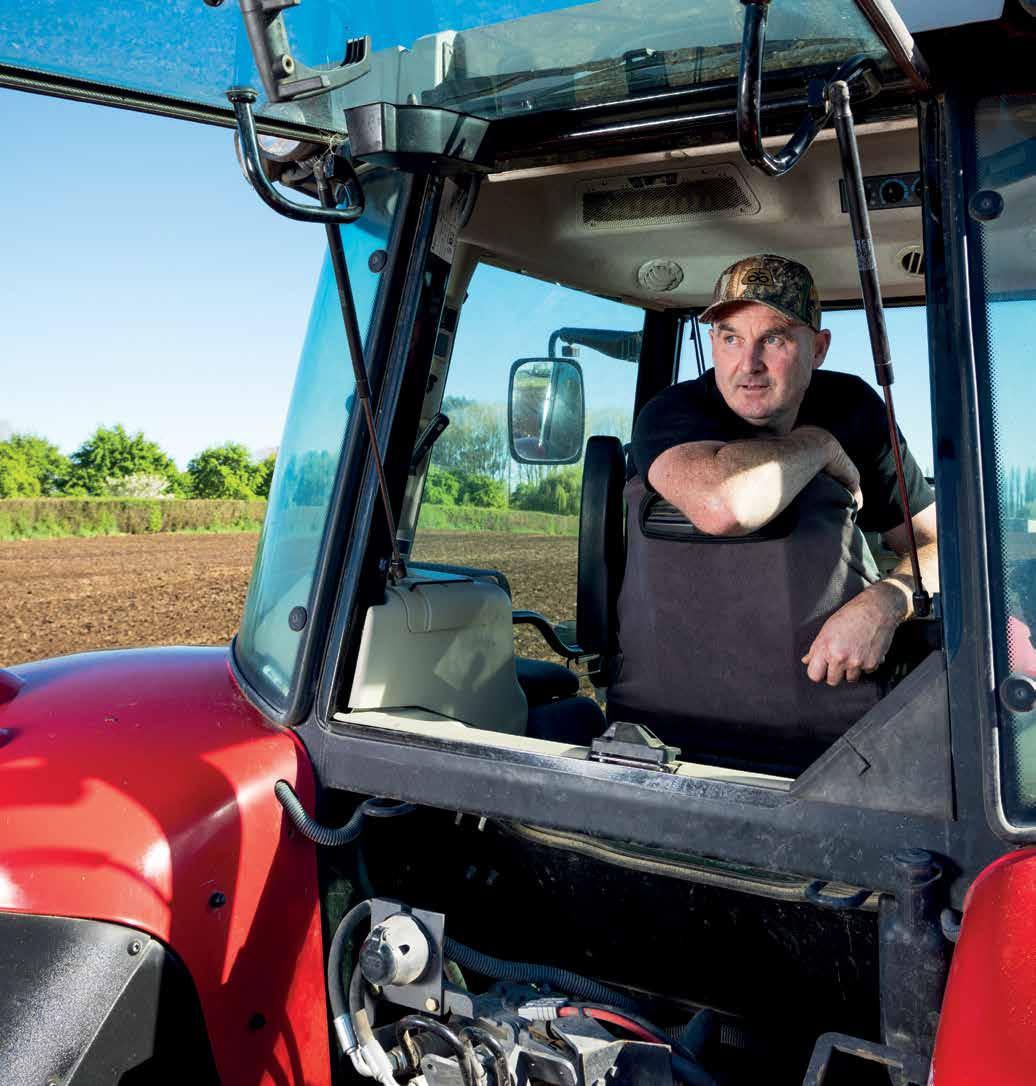
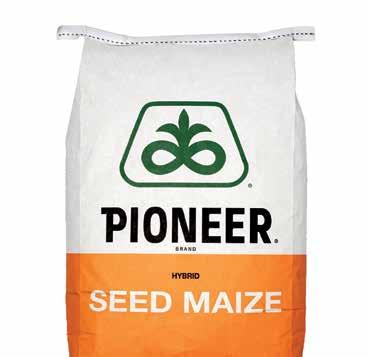
WHILE THE vehicle
industry is addressing the future by developing engines that run on waste oil, hydrogen, or indeed electricity, one Christchurch-based company is looking at things in a different direction with the use of steam.
Mackwell & Co Ltd was established in 2016 by founder Sam Mackwell, with a focus on energy resilience and fossil-fuel-free transport.
Mackwell realised the two concepts needed to address this are the use of accessible and low value biomass as fuel, and a technology that can safely and cleanly convert
this, often waste product, into useful work without relying on an extensive infrastructure.
The Mackwell A35 features a unique biomassfired water tube boiler that is compact and responsive enough for use in transport as well as statically for fixed shaft power or electricity generation. The A35 traction engine is designed for horticultural and small farm towing up to seven tonnes at 40 km/h, with the developers suggesting that it could be a direct replacement for the myriad of MF 35 and 135’s operating around New Zealand and elsewhere.
The same boiler and engine will also be produced as a 26kW gen-
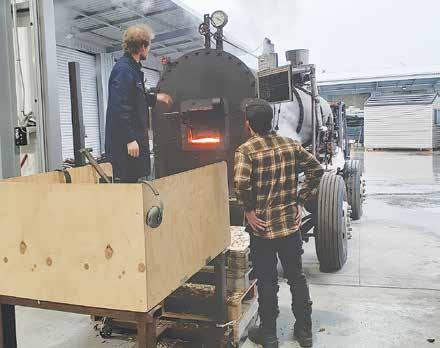
erator set offering up to 180kW of heat. Once the concept is proven in the market, the design will be scaled to 600kW for
industrial and marine use.
Customers can expect more than 35% in overall cost savings when replacing diesel engines,
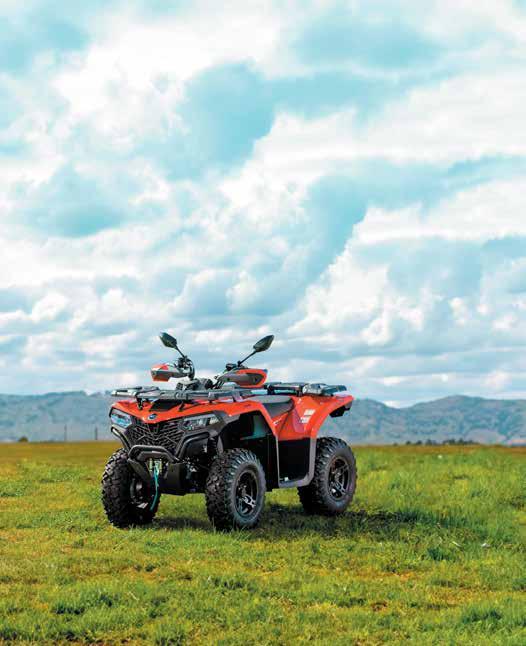
alongside a 96% reduction in CO2 emissions.
Small engines are said to be suitable for manual fuelling, while the larger
applications will require a mechanical feed system to maintain the 2.5 kg/ kWh input requirement.
Mackwell engines can also deliver additional value where heat is needed, such as in hydronic underfloor heating or food processing situations. In this way, Mackwell engines go beyond traction to complement a range of renewable energy systems, but without the need for expensive storage or distribution.
Looking at practical considerations, biomass fuelling can make abundant use of the supply of waste timber sitting in forests around the country. Dry fuel consumption is 2.5 kg/kWh which
will increase with moisture, but a key advantage is the ability to utilise any unprocessed biomass of up to 55% moisture content. Able to start from cold to working pressure in 10 to 15 minutes, the combustion chamber burns in the range of 900 - 1000 degrees centigrade, with no smoke or sparks from the stack and the resultant ash able to be used as a fertiliser.
Earlier this year, Mackwell partnered with Biocare Pty Ltd to design and manufacture four large combustion chambers for a project in Kangaroo Island, off the coast of Adelaide, which is set to become one of the largest biochar projects globally.
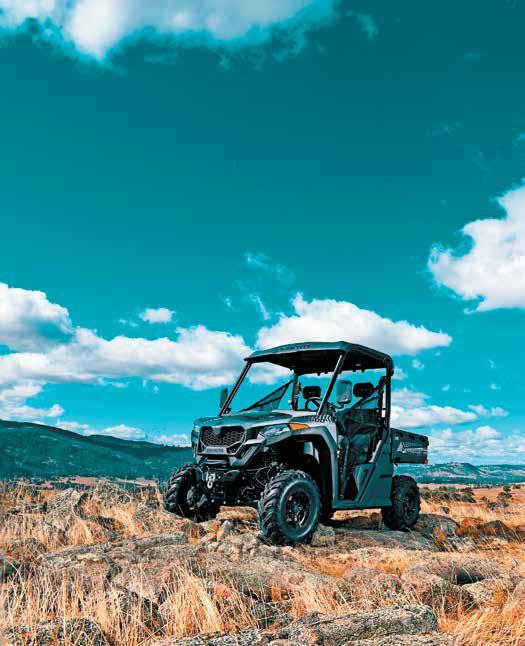
PUTTING MORE lamb on Kiwi dinner plates is one way to boost returns to farmers.
This is one of the three actions recommended by a Rabobank report to create more consistency in earnings along the supply chain.
The challenge for the red meat sector’s marketing arm is to increase per capita consumption of lamb to Australian levels. That one achievement would propel the domestic market behind only China in terms of overall consumption of New Zealand sheepmeat.
According to the report, the majority of New Zealand lamb is exported, and over the past five years, New Zealand’s domestic consumption has averaged just 5% of total production.
Domestic consumption is limited by population size, but at 1.95kg, New Zealand per capita consumption is not even one-third of Australia’s 6.4kg, as stated by 2023 OECD data. Australia’s much higher domestic consumption adds resilience to their lamb market, as strength in domestic retail trade can help balance out global demand dynamics and associated price volatility.
The report says what our Aussie cousins have done well to support domestic consumption is to promote Australian lamb quality and nutritional value. New Zealand has pushed these messages in the past, but an opportunity exists for industry bodies to invest in marketing the New Zealand lamb story to reposition lamb in the eyes of local consumers, it says. So, why is NZ lamb not hitting Kiwi plates more often?
According to the OECD, domestic consumption of other proteins such as pork and poultry has increased significantly and a major drive towards export markets for lamb may have contributed to higher prices domestically.
The challenge for Beef + Lamb NZ Inc is clear – convince Kiwis to eat more lamb.
Our Aussie cousins are experts at this. Let’s take a leaf out of their book and try similar campaigns here. More lamb consumption in NZ means better returns for our hardworking sheep farmers.
HEAD OFFICE POSTAL ADDRESS:
PO Box 331100, Takapuna, Auckland 0740
Phone 09-307 0399
PUBLISHER: Brian Hight Ph 09 307 0399
GENERAL MANAGER: Adam Fricker Ph 021-842 226
EDITOR: Sudesh Kissun Ph 021-963 177 sudeshk@ruralnews.co.nz
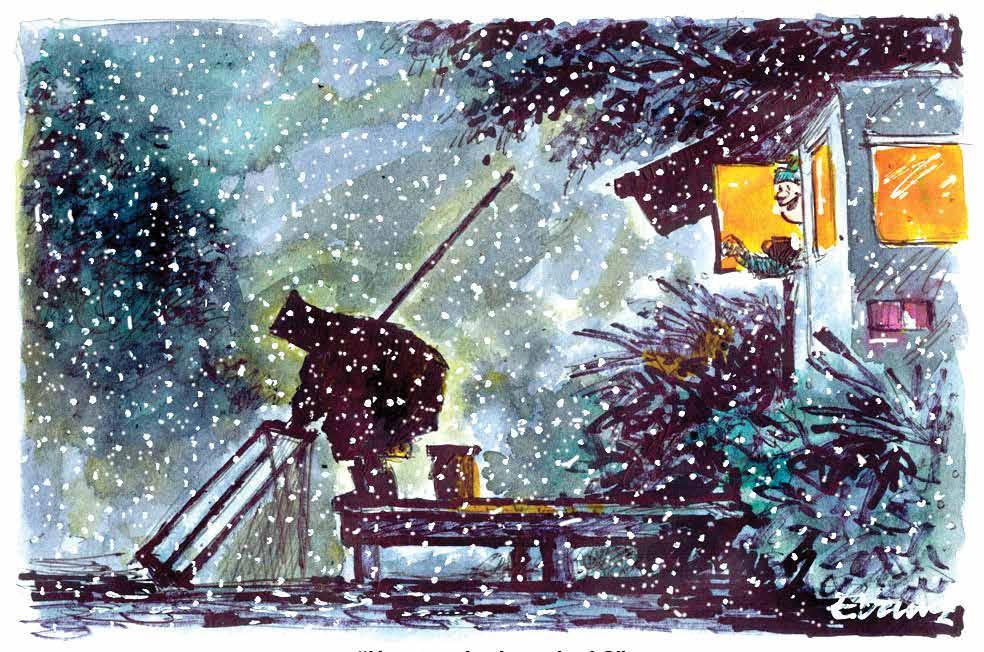
“Have we had any luck?”
WHILE THE Hound reckons it’s great to see Shane ‘I’m-a-redblooded-male’ Jones boiling over about the energy crisis - so much so he’s dropping f-bombs in the daily rags - your old mate hopes we’ll see more than his usual bluster and get real action on this crucial issue. Two pulp mills have closed, and now we have reports that grain growers can’t secure contracts because it’s uncertain there will be enough gas, at the right price, to dry the stuff. Act’s energy spokesman is probably right, saying “The previous Government’s kamikaze approach to climate change crashed the reliability of our energy supply”, and Jones is justified in his anger too, but blame won’t keep industry afloat. Time for action, and for the Opposition to grow up and join a cross-party accord for the future.

YOUR OLD mate isn’t really a fan of the recent trend towards collective whingeing, otherwise known as an ‘open letter’. However, with the future of New Zealand’s energy supply at stake, the letter penned by the gas lobby group GasNZ, along with leaders from 11 other energy and resource organisations, seems more useful than one from 400 ‘church leaders’ opposing non-existent legislation. The letter calls for an end to energy being used as a political football to the detriment of a clear plan for stable energy supply. “Ensuring that our homes, schools and hospitals are warm, and that our industries have reliable and affordable energy shouldn’t be a partisan issue,” says GasNZ. We all know gas is part of the answer, yet Chris Hipkins has stated he’ll oppose cross-party action if it involves gas.
PRODUCTION: David Ferguson Ph 027 272 5372 davef@ruralnews.co.nz
Becky Williams Ph 021 100 4381 beckyw@ruralnews.co.nz
REPORTERS: Peter Burke Ph 021 224 2184 peterb@ruralnews.co.nz
Nigel Malthus Ph 021-164 4258
MACHINERY EDITOR: Mark Daniel Ph 021 906 723 markd@ruralnews.co.nz
MASSEY UNIVERSITY has long been, and still is, a core part of the NZ farming scene, training the next generation of farmers, growers, agronomists and more, and doing great research too. But new research suggests they may have an issue with academic freedom, with the latest Massey Engagement Pulse survey showing many staff there do not feel free to voice their opinions “for fear of reprisal” for not toeing the party line. Only 5% agreed there was “honest two-way communication” (66% disagreed) and 9% agreed the leadership kept people informed about what is happening” (61% disagreed). The Free Speech Union says the same trend has been seen at the woke AUT and Auckland Uni, where they say debate and dissent is not welcomed. This old mutt just hopes Massey isn’t going the same way.
AUCKLAND SALES CONTACT: Stephen Pollard Ph 021 963 166 stephenp@ruralnews.co.nz
WAIKATO & WELLINGTON SALES
CONTACT: Lisa Wise Ph 027 369 9218 lisaw@ruralnews.co.nz
LISTENING TO the hysterical reportage of gun law reforms being pushed through by Associate Minister of Justice Nicole McKee, your old mate wrongly assumed the Minister must be planning to hand out free AK-47s. It turns out she has focused on easing the regulatory burden on gun clubs and licensed firearms owners, removing some reporting requirements for gun clubs, which had been introduced after the Christchurch terror attacks. These requirements were intended to enhance oversight but have been criticised as adding unnecessary bureaucracy, without improving safety. Statistics show that gun crime kept rising after then-Minister Stuart Nash’s kneejerk response to the terror attack, penalising responsible gun owners for no gain in safety. Turns out the bad guys didn’t feel like complying with Nashy’s rushed set of laws. McKee is shooting for a more reasonable middle-ground.
SOUTH ISLAND SALES CONTACT: Kaye Sutherland Ph 021 221 1994 kayes@ruralnews.co.nz
DIGITAL STRATEGIST: Jessica Marshall Ph 021 0232 6446



The Ministry for Primary Industries (MPI) says that early detection and strong on-farm biosecurity will be crucial if high pathogenicity avian influenza (HPAI) – also known as bird fluarrives in New Zealand.
MPI Chief Veterinary Officer Dr Mary van Andel says New Zealand’s geographic isolation has protected us from HPAI in the past, but we can’t rely on it forever.
“New Zealand has never had a case of HPAI, but we have been closely monitoring its movement around the world for more than 20 years. Since a new H5N1 strain of the virus emerged in 2020, government agencies and industry have been keeping a close watch on events overseas, and preparing should it get to New Zealand.
“Given the unpredictable journey of wild birds who can travel with HPAI, it may still arrive here. While we can’t prevent that, we can work together to reduce its impact.
“Early detection and strong on-farm biosecurity will be key to responding effectively and managing any impacts on biodiversity, agriculture and trade.”
Dr van Andel says everyone

has a role to play in helping to detect HPAI early. “If you have poultry or other domesticated birds, monitor them for disease and contact your vet if you have concerns about their health.
“If you see three or more sick or dead wild birds, contact the exotic pest and disease hotline on 0800 80 99 66.”
The H5N1 strain is spread by direct contact between infected and healthy birds, and indirectly through contaminated equipment,
materials, water and feed. MPI is working closely with the poultry industry to support farmers and growers to have robust on-farm biosecurity plans in place.
Dr van Andel and industry representatives recently met with key organisations in the United Kingdom, including the British Poultry Council and Egg Industry Council.
“The UK has been responding to the wildlife-adapted strain of HPAI since 2022. Given their
similar geographic size and environment, and seeing how HPAI has impacted their industry, has provided us with good insights to inform our planning and build sector resilience,” Dr van Andel says.
Dr van Andel says wild birds should not be culled or dispersed from farms, because disturbing groups of wild birds can potentially spread disease further, and other birds will quickly move into the vacated space.
• Wild birds and their faeces are the greatest risk for introduction of HPAI into groups of owned birds. If you keep poultry or other birds, keeping them away from wild birds and wild-bird faeces is critical to reducing the risk of them getting infected.
• Keep animal/bird food, water and bedding in enclosed areas so wild birds cannot access them.
• Practise good hygiene before and after handling birds, including wearing appropriate dedicated clothing.
• Reduce exposure through good biosecurity measures such as rodent control, limiting nonessential visitors and securing bird enclosures.
• Early detection is crucial. If you see three or more sick or dead wild birds, please report it to MPI’s exotic pest and disease hotline 0800 80 99 66.
For more information, visit www. mpi.govt.nz/HPAI
Spring is the ideal time for farmers to assess their expected annual feed demand – and identify the best way to manage any potential shortfalls, says MPI’s director of On Farm Support, Dr John Roche.
MPI’s On Farm Support team can help landowners looking to improve their farm resilience and avoid potential feed shortages, which can often occur during winter, early spring, or summer, when a property isn’t growing enough grass for the number of livestock on it.
Most farmers use a range of tactics to get through. These can include reducing livestock numbers or using supplementary feed, but both require a plan.
Summer crops, such as turnips or chicory, deferring surplus spring pasture to summer or harvesting it for silage or baleage, can help.
“It’s important during spring to identify any pasture surpluses early and to determine how you’ll harvest the grass to use at a later date,” says Dr Roche.
“If you’re new to an area and use contractors to make your
MPI continues to engage proactively with farmers and sector groups to promote best practices in animal welfare - and we reiterate our commitment to help whenever issues arise.
“While the vast majority of our farmers work very hard to do the right thing by their animals, reminders are important that help is available and to ensure standards remain high,” says MPI’s director of On Farm Support, Dr John Roche.
“If there are problems or issues, the sooner we know, the sooner we can work with farmers and veterinarians to help resolve matters.
“We take compliance action when it’s required, but in most cases issues can be resolved though direct on-farm support – and we are committed to that.
“If you are aware of anyone needing support with the care for their animals, please call us on freephone 0800 70 71 33, or email onfarmsupport@mpi.govt.nz.”
silage or plant your crops, it’s a good idea to get in touch with them early.
“Feed budgeting is an important part of day-to-day farming. It can help identify potential gaps early and give you time to make a plan to address them.
“The majority of farmers do a great job of harvesting every blade of grass. It’s the cheapest feed you’ll grow. But with onfarm costs tight, it can often be
useful to run a few numbers, to help keep costs down.
“Regional teams from On Farm Support, DairyNZ and Beef + Lamb NZ have useful resources to help do a feed budget, or assess cheaper ways to fill predicted feed gaps.”
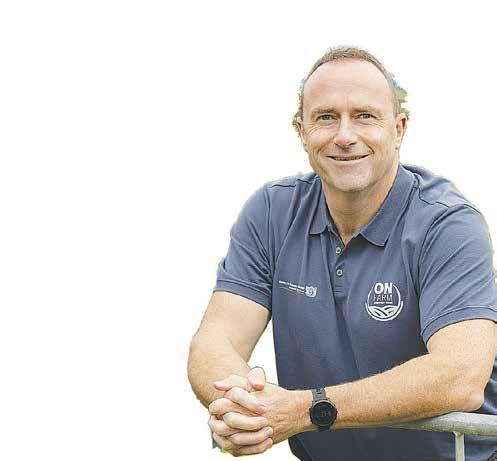
specialist veterinary support to drought-affected farmers in the Hurunui District.
Dr Roche says these are also important conversations for owners of lifestyle blocks.
“Do some calculations to figure out if you’ll have enough
Farmers are encouraged to make early decisions if they have concerns about animal health or livestock welfare issues by seeking advice from trusted ad-
visers, veterinarians, and support organisations such as their local Rural Support Trust. Alternatively, they can contact MPI by calling freephone 0800 70 71 33 or emailing onfarmsupport@mpi.govt.nz
I MUST admit I really do enjoy spring. The extra daylight minutes and the warmer temps are very welcome in my world!
All the trees coming back to life and of course the brightly coloured blossoms make a colourful spectacle, in sharp contrast to the often-drab days of winter.
There is just something about this new life flowing that always gets my attention.
We have some “wild” daffodils that were planted around an old cottage here decades ago. They are usually first out of the blocks for us when it comes to seeing spring arrive.
For those of us in the rural sector, it’s lambing and calving time – a busy season for us all, to be sure. I have just managed to nurse a couple of

twin lambs, that got here a little prematurely, to some stable and improving health. It took me a couple of days to get them out of intensive care, so yes, I am rather pleased.
And we in the rural sector surely do appreciate the grass growth that comes with this change of season. Now, what can easily get missed with spring is the arrival of all the migratory birds back to our shores. Unless of course you are actually
living in an area where they arrive, these birds just land unannounced, right on time, like they always do.
Take the godwits for example: they land here after a non-stop flight of a mere 11 – 12,000km. Yep, it’s non-stop all the way from Alaska. The trip takes them approximately eight days and they clock an average speed of 60km/h – all done with no smoko! Very impressive stuff indeed.
I have read that the hummingbird also migrates, up in the Americas. I believe the hummingbird holds the title of the world’s smallest bird, so it must be a tough little guy to make those long trips through all kinds of weather.
Thinking about this, I realised afresh that all these birds do all this

stuff without any assistance or expertise from us clever humans. As smart as we think we are, we couldn’t make that same trip without stopping for some serious rest, and several high energy feeds. They employ no dieticians and have no science developed diets. They have no highly paid fit-
ness trainers, no mental skills coaches and no high performance gurus to get them in shape for come what may! And they don’t have politicians trying to convince them, ‘hey, we are your source of truth, we know what’s best for you’. That surely must be a major plus! Satellites, GPS and other complex naviga-
tional aids and support are all put in place by intelligent people to keep us on course in our travels. Yep, people design and engineer this stuff, which I truly do appreciate, especially when I’m on a long-haul flight up into the Northern Hemisphere!
Well, these birds are also testimony to very
complex and intelligent design. They don’t need any of the stuff we depend on, simply because they have something better built into every single one of them.
Just as every painting has a painter and every photo has a photographer, so every design has a designer.
Today I remind you that for us humans, in living our lives, we cannot keep breaking the candle in half and burning it at all four ends. For us and our design, we need time out; times for rest and refreshing. It’s always wiser to make the needed changes yourself than to have those resulting changes forced on you! God bless.
• If you want to contact Colin Miller email: farmerschaplain@ ruralnews.co.nz
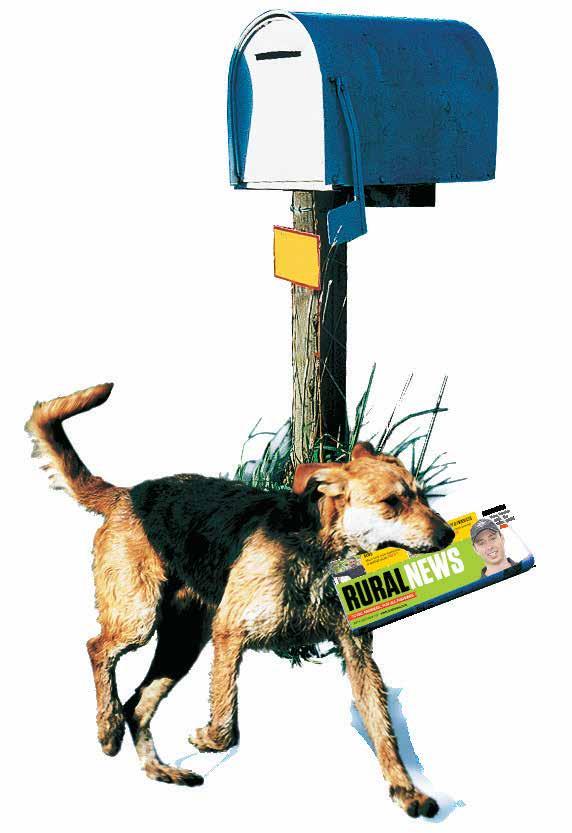

laws today. Nobody gets high on industrial hemp.
LOCAL GOVERNMENT is badly underfunded.
Economic circumstances demand a new approach to funding the constant burden of infrastructure delivery and renewal. The costs must be eased for urban and rural ratepayers.
We need a new financial maturity using our local authorities’ ability to engage in the market by identifying sound investment in co-own ership and partnership profit-making initia tives that serve rate payers.
The global indus trial hemp market will grow from $4.6 billion in 2019 to $30 billion and more in a few years, with a pro jected pound growth rate of almost 20%. New Zealand is not exporting hemp products yet, but we have an environment and agricultural system suited to large-scale hemp cultivation to deliver large returns to the regions.
Hemp delivers fibre, textiles, food, oils, seeds, organic cellulose, ethanol, green biofuels, green bioplastics, animal feed, even high-protein vegan meat and nutritional supplements. Hemp stores far more carbon than pine. There is no forest ‘slash’ mess to clean up. Its uses range from building products to foods, medicines and cosmetics, to absorbing and removing toxins from soils (bio-
Hempcrete alleviates the negative impact of the construction industry on the environment and provides low-cost buildings. Hemp reinforcing (rebar) is stronger than steel and does not corrode.
Grown from October to January, hemp is a perfect rotational crop for dairy, beef and sheep farms, with no change to existing land use. Hemp rehabilitates soils from the effects of superphosphate by absorbing heavy
subsidise rates. Using local government could also help target the best scale, or capacity, for the hemp industry here.
The cost to set up processing is quite high. Establishing processing would be as much as $10 million depending on the product. Some of the $1.2 billion available for the Regional Infrastructure Fund could be used to replicate the best examples across the world where industrial hemp is already established.
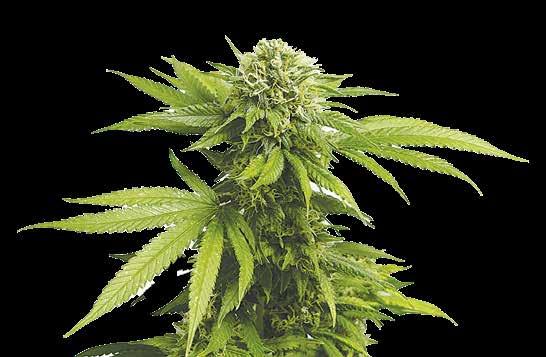

Look at one district. South Wairarapa has 70,000 hectares in dairying, beef and sheep. In a crop rotation with existing farm practices many thousands of hectares could be in highprofit hemp production, contributing to the regional economy, infrastructure and well-being, and easing the $30 million South Wairarapa rates burden on
Far beyond cannabinoids and hemp seed, hemp is a superplant in its entirety, serving mankind for thousands of years.
Demonised in the 1930s through a deliberate and false drug connection stigma, industrial hemp was forced off the table for more than 80 years by chemical giants who feared its competition with the nylon and Teflon compounds they were producing.
By pushing the ‘evil drug’ lie, the potential in high value and biodegradable hemp was never developed. Unbridled, the chemical companies choked the globe with plastics and blew the ozone to pieces.
Incredibly, the shadow of this folly resides in our
ing at one hemp product, hemp concrete, gives a glimpse of the potential of this product. Hemp concrete or ‘hempcrete’ is a bio-composite alternative to concrete for construction and insulation.
Hempcrete is ‘carbon-negative’ or ‘better-than-zero-carbon’ because the hemp plant absorbs more carbon from the air during growth than it yields during its production. It continues to absorb carbon after being used in construction, storing more carbon over the building’s lifetime than was emitted during construction.
Preliminary 3D-printing research shows hempcrete is printable with a density as low as 660 kg per cubic metre, with adequate buildability and compressive strength for printing individual walls.
the commercial hemp crop.
Hemp is low in water use and needs similar fertiliser to maize. It smothers weeds after a few weeks’ growth and does not need pesticides.
Hemp grown for fibre alone will return at least $2000 per hectare. Higher value hemp seed, oils and animal feed can be produced from the same crop. Exporting the fibre is one option, and processing products here would show a far better return as the international demand steadily grows.
Each region in New Zealand could develop different products or combine to produce a lower number of ‘best return’ products.
Local authorities could enter partnerships with farmers and landowners, with the council’s profits used to
There is a fitting provenance to fibre production. In 1793, in the hands of Māori, high quality rope and twine made from harakeke (flax fibre) was New Zealand’s first export, and the great Prime Minister Michael Joseph Savage worked in the biggest flax mill in the country at Manawatu.
Government is rightly sceptical of unfounded data, and farmers are conservative in adopting new crops. Hemp research is credible, concise, and backed by scientific evidence.
In her definitive study ‘New Zealand’s Industrial Hemp Industry’ Otago University’s Polly Brownlee spoke of the creative innovation and collaboration needed to realise hemp’s enormous potential.
The first spade in the ground needs to be visionary leadership.
• Geoff Vause is a Featherston-based journalist.
Rural Contractors NZ says members are frustrated at having to work through more layers to get visas approved for skilled seasonal machinery operators ahead of the imminent season start. Andrew Olsen comments.
I HAVE been seeing a significant increase in my members asking for assistance of late.
While I try to help, dealing with the daily influx of confused and disgruntled rural contractors asking for help is wearing a bit thin.
We are not an immigration advisory service but we sure feel like we’re paying a price for the lengthy checking and processing times.
I had hoped the second year of the accreditation requirements would have been smoother but it’s not what we’re seeing. We have NZ employers
applying for re – accreditation and time frames for this have blown out meaning further delays in being eligible to apply for visas.
Add then the average approval time for the AEWV has blown out from two months to four months and it’s plain to see the temperature rising amongst our members.
The vast majority of businesses can’t afford an Immigration advisor to navigate the complexity of accreditation or visa applications – the AEWV in particular – so there’s a lot of hit and more miss than the previous year.
I do acknowledge that in response to lobbying Immigration NZ officials and the Government, Immigration Minister Erica Stanford had announced rural contractors could use the Special Purpose or Event class of visa (SPEV).
This had become the ‘go to’ option for members who had not already invested in the AEWV and did not have accreditation. However, in midAugust MBIE advised the SPEV visa was now the SPWV visa (Specific Purpose Working Visa).
This had come with additional conditions including a need
to advertise a role for which he says there were no trained and available Kiwi workers. However, around 80% of applications were approved in three weeks and feedback from members indicate the SPWV is currently the preferred visa class.
In discussions the Immigration Minister has emphasised this visa class is a temporary mea-

sure prior to the overhaul of the AEWV by Immigration NZ to be in place for rural contractors (and others) to hire overseas labour next season.
The Government has also acknowledged there is a case for looking closely at what a seasonal worker visa looks like.
In our case, many of these workers will return several years in a row,
already have a NZ bank account, IRD number and an accredited employer backing their visa so wouldn’t it make sense to design a visa around that?
This is an opportunity for the Government to take pressure off and allow Ag NZ to get on with the business of doubling exports.
The Government must also consider immi-
gration policy changes alongside its review of vocational training. For our members the career pathway is a shambles and we foresee a significant reliance on skilled overseas workers in the mid-term and until vocational education training sorts itself out.
Future training must be focused on providing specific, short courses (micro-credentials) which give the trainee businessrelevant new skills.
Rural contractors don’t support having to send workers to polytechnics for training for weeks and months on end. They want their workers to be able to pick up micro-credentials on the job and build these if they wish into a qualification.
• Andrew Olsen is Rural Contractors NZ chief executive officer.
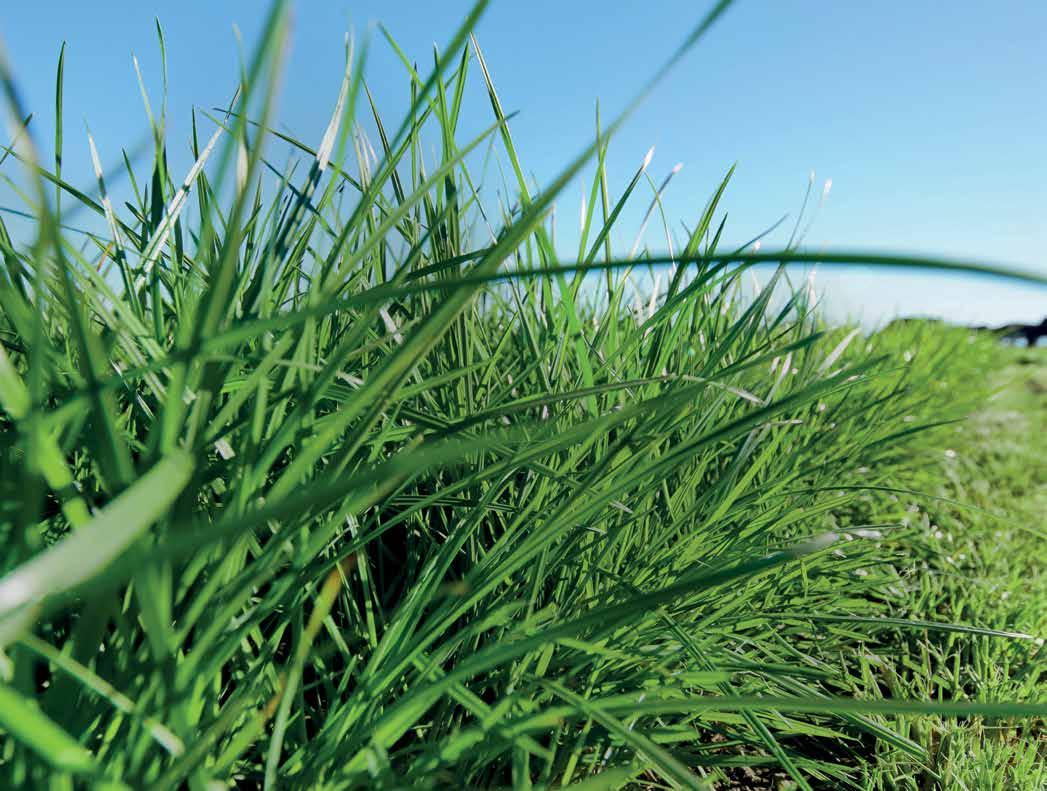
SUDESH KISSUN sudeshk@ruralnews.co.nz
THE SHEEPMEAT sector would be wise to reflect and learn from the present downturn and embrace change needed to deliver stronger and more consistent returns year-on-year, according to Rabobank senior animal proteins analyst Jen Corkran.
She says for New Zealand sheep production to be a competitive part of the farm system for red meat producers, change is required.
Her comments come in a new report, titled ‘Watering the green shoots in New Zealand sheepmeat’, released last week.
The report notes that NZ sheepmeat values dropped dramatically in the 2023/24 season following two years of strong export returns.
Total average export values dropped from $12.63/kg free on board (FOB) in October 2022 to as low as $8.08/kg FOB in December 2023, dragging farmgate prices down in the process.
“In our assessment, the major factors that caused the cycle to bottom were global macroeconomic and geopolitical factors filtering through to New Zealand’s primary producers, and a fall in New Zealand sheepmeat exports to China.
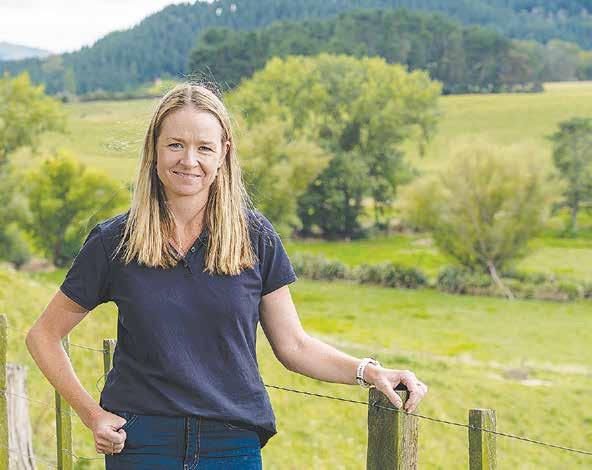
“This was then made more challenging due to increased competition from Australia,” says Corkran.
“The timing of this downturn was unseasonal, and the price challenges coincided with high on-farm costs that squeezed margins for both producers and exporters.”
The report identifies three pathways that could help lift sheepmeat returns: focusing on increasing domestic consumption, reassessing trade and diversifying export markets away from China, and invest-
ing to boost the competitiveness of New Zealand sheepmeat.
Corkran says the good news is that 2023/24 likely saw the bottom of the cycle and, based on both supply and demand dynamics, lamb projections for 2025 and beyond show upside.
“If the industry takes a strategic approach, our view is that the mediumto-longer-term upside could be greater from 2026.”
The report says the majority of New Zealand lamb is exported, and over the past five years, New Zealand’s domes-

tic consumption has averaged just 5% of total production.
“Obviously, domestic consumption is limited by population size, but at 1.95kg, New Zealand per capita consumption is not even one-third of Australia’s 6.4kg (2023 OECD data),” says Corkran.
“If Kiwis were to increase per capita consumption to Australian levels, it would place the domestic market behind only China in terms of overall consumption of New Zealand sheepmeat. Australia’s much higher domestic consumption adds resilience to the
lamb market, as strength in domestic retail trade can help balance out global demand dynamics and associated price volatility.
“What Australia has done well to support domestic consumption is to promote Australian lamb quality and nutritional value. New Zealand has pushed these messages in the past, but opportunity exists for industry bodies to invest in marketing the New Zealand lamb story to reposition lamb in the eyes of local consumers.”
IN THE years ahead, the report says, New Zealand has an opportunity to deeply understand the export markets and consumers it supplies with its valuable sheepmeat.
“Lamb is a small part of global protein consumption, and the number of exporters is limited with Australia and New Zealand dominating global sheepmeat trade. New Zealand should aim to be clever and careful in finding a good balance of trade partners for both commodity and differentiated products in the coming years,” Corkran said.
The report says China, the EU, UK, and US are currently the top export destinations for New Zealand sheepmeat volumes, with China taking nearly half of New Zealand lamb in recent years. “Although exports to China do not have the highest value per kilogram, the market has served New Zealand well in taking volumes of lamb and mutton,” Jen Corkran says.
The main advantage of trade with China is that more of the sheepmeat carcass is utilised, for both mutton and lamb, she says. Although shipments to China have the lowest export value per kilogram of product, the market takes high volumes of lower-value meat, with exports peaking in 2021 at nearly 250,000 tonnes valued at close to $1.43 billion.
“With New Zealand lamb being recognised in China as a high-quality and nutritious product, more work could be done to ensure a foundation for ongoing success when it comes to the value this can gain. Chinese consumers’ growing interest in nutrition and health provides an opportunity to promote how New Zealand lamb fits alongside beef and seafood as a highly nutritious and naturally produced protein.”
While markets that can and will take lower-value carcass sheepmeat cuts like China will remain important for New Zealand, Corkran says that opportunities in the UK, the EU and the US should also be reassessed.
“NZ has historic trade relationships with the UK and EU and must continue to foster relationships to make full use of free trade agreements and tariff-free access. In 2015, New Zealand sent more than a third of total combined sheepmeat exports to these markets, but as exports to China increased, the dial shifted slowly downward,” she says.
With the UK sheep flock in decline and lower production from the UK expected for the medium term, import demand is likely to increase. “Although domestic demand is unlikely to grow in the UK, New Zealand’s share of the pie could.”
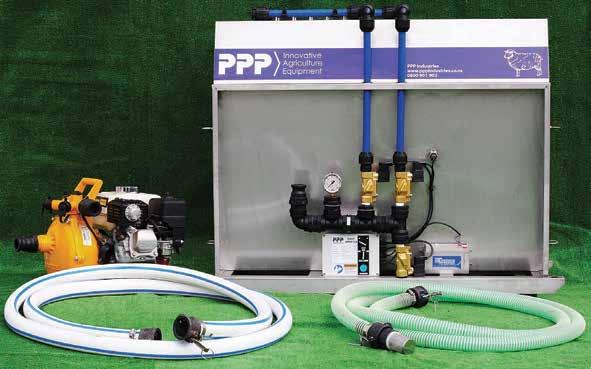
AS THE judges’ citation put it, anyone who has been involved in the arable industry for the past 40 years has surely met the man named to the industry’s Hall of Fame at the recent Arable Awards, Greendale grower Syd Worsfold.
A stalwart of a wide range of organisations including United Wheatgrowers, where he was chairman for five years, FAR, Federated Farmers and others, Worsfold was recognised for what the judges called his “lifelong enthusiasm, commitment and support for all things arable”.
“My passion has been the wheat industry, working with the people within the industry to try and make it better for everybody,” Worsfold told Rural News.
Among a slew of more minor awards, Worsfold was named the 2018 Arable Farmer of the Year, and the 2019 Wheat Grower of the Year jointly with his son Earl.
Along with Earl and his partner Fiona, wife Trish and daughter Catherine, Worsfold farms about 400ha at Green-

dale, near Darfield on the Canterbury Plains.
Worsfold says they grow “as much arable as we can”. Most of the farm is harvested annually but carries stock through winter with about 3000 lambs currently on the property.
“If it’s not harvested during the year, it will be going into green feed for dairy cattle or lambs.”
They also run a contracting business, and have previously also done their own cartage.
“My grandfather started with a traction
engine and threshing,” he says.
Wheat remains Worsfold’s passion and still the farm’s biggest line but Earl grows barley, peas, and brassica, radish and clover seeds.
“I used to concentrate on what I did best,” said Worsfold.
As it has always been, South Island wheat is pretty much all used in the South Island.
“It’s one of the things that I’ve been involved with all along - how can we get it into the North Island at a realistic price
to compete with Australian wheat.”
Worsfold echoes the plea made during the Arable Awards ceremony by the Special Agricultural Trade Envoy, Hamish Marr, that local growers could supply all the milling wheat for New Zealand, rather than importing from Australia, if rail and ferry services were upgraded.
Worsfold says the biggest change since deregulation has been the growth of the feed wheat industry, using varieties from England and Europe
that grow extremely well, yield at least 20% more than milling wheats, and meet a big demand from the chicken, pig and dairy industries.
But he believes the milling wheat industry needs to double in size.
He says his concern “all along” is how long the milling wheat industry can maintain its research and development base on a limited production base.
He says lot of R&D goes into the milling wheat programme, spearheaded by PGG Wright-
son and Plant & Food at Lincoln.
“They have a tremendous gene bank and ability to breed varieties that suit New Zealand.
“But for the tonnage that we’re growing, you just wonder how long we can maintain that infrastructure and everything that goes with the breeding and research programme. And if we lose that it will never come back, because you won’t be able to have all that history that’s in the breeding programme.”
“So, the only way we
can increase bread wheat consumption, is by getting something north.”
Meanwhile, he said there was currently some stockpiling of grass and clover seeds.
A big change in the seed industry was that he used to grow grass seed which was harvested in early January, then cleaned, dressed and made available in February for autumn sowing.
Now, later maturing varieties, which are better for the stock because they don’t go to seed and stay green for longer, are not harvested until February and miss that immediate sowing window.
“So, the seed companies are having to carry it for a year.”
Neither the local dairy industry nor Australia, the biggest market for grass seed, have been renewing pasture.
“And there’s not much going into Europe or to the States as far as I can understand.
“It’s just quiet right around the world.”
But Worsfold hopes the dairy industry might use a bit this spring now that dairy returns have had “a bit of an upswing”.
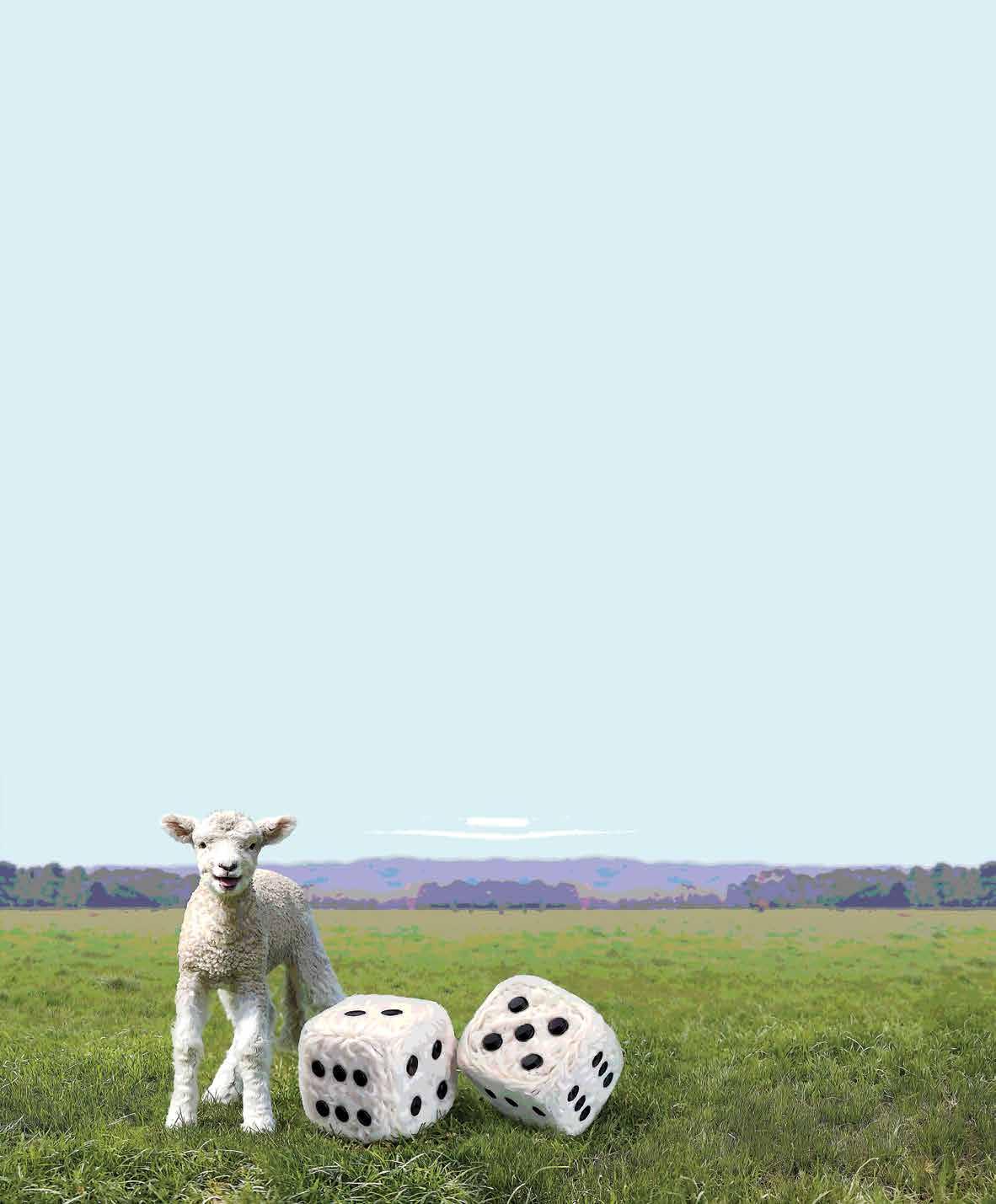

THREE NEW Zealanders took top honours at the fourth annual John Deere Technician of the Year Awards.
The wins were recently announced in Brisbane, where John Deere Australia and New Zealand managing director, Luke Chandler, congratulated the Kiwi winners and acknowledged the value they bring to their local communities.
Marcus Vine was named New Zealand’s Agriculture & Turf Service Technician of the Year. Having grown up in town, to become New Zealand’s leading John Deere agriculture & turf service technician, Marcus has developed a deep connection with the industry and customers he serves.
After school, Marcus pursued a pre-trade light automotive course and mechanical apprenticeship, before making the “best decision he’s ever made” by signing up to work at a John Deere dealership in Foxton.
Eighteen years later, now

based at the Brandt dealership in Feilding, he said new technologies like GPS and autonomous solutions meant every day still presents new learning opportunities and career growth.
“Time is money for them, and they really appreciate what we do and the skills we bring in keeping them up and running,” Marcus says.
“There’s a lot of variety in this role, and John Deere provides awesome
support in terms of inperson knowledge-sharing and online courses, so you always have the right resources. Even getting to this point as a finalist in the Tech Awards is a huge honour, let alone winning the title.”
Not too far away, Daniel Stoneley of Brandt Masterton never thought too much about agriculture until he began working as a parts technician, but has proved you can be the best in the coun-
try, regardless of your background, by taking out the award for the New Zealand Parts Technician of the Year.
“I was more of a city person, but now I love the challenge of working in agriculture, as the industry is always evolving and growing, and the different technologies keep things interesting,” Daniel said.
“Farming is the backbone of the community, and I find it very reward-

market-leading brand and be part of such a great support network.”
Further south, Liam Gee, Drummond & Etheridge, Blenheim, was awarded the John Deere New Zealand Construction & Forestry Service Technician of the Year.
Liam says, “No two days are the same. One day I’ll be in the workshop carrying out repairs, the next I’ll be two hours away in the middle of a forest repairing a machine. My job takes me to some cool locations, and I get to work on the great product that John Deere produces.”
ing helping our customers get up and running,” he said. “The technology in John Deere equipment is always evolving too, such as automation, and I’m proud to work on the
Now mainly specialising in forestry equipment, Liam had grown up around machinery and always had a keen interest in figuring out how things worked. Liam approached the service manager at his local John Deere dealership about the chance
to undertake work experience after he finished school, which developed into an apprenticeship. Six years later, Liam is now the leading construction & forestry technician in the country.
Established in 2021, the prestigious awards champion the important contribution technicians make to New Zealand agriculture, construction and forestry industries, via outstanding service and support to John Deere’s valued customers.
More than 130 technicians were nominated by their dealerships in 2024, with input from customers, and the 32 finalists travelled to the company’s Australian headquarters in Brisbane this week to be put through a rigorous assessment process, testing diagnostic capabilities, technical knowledge and customer service skills.
BASF NZ is set to launch its 2024 Safety Champs Programme, said to provide a fun and interactive way to make farms safer for children.

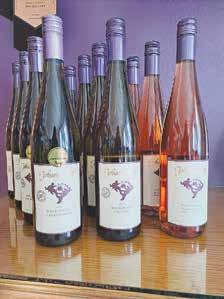

This year’s theme of sun safety will promote awareness of sun protection for children growing up on farms.
Skin cancer, including melanoma, is the most common form cancer in New Zealand and accounts for an estimated 80% of all new cancers identified each year.
Increasing awareness of skin cancer is crucial for children growing up on farms, where they are often exposed to the sun for extended periods. Educating kids about sun safety not only protects their health but also instils habits that can prevent skin cancer. This ensures that our future generation of farmers work safely and healthily.
The Safety Champs packs have been designed to support parents and caregivers in facilitating conversations with kids about the importance of sun protection. The fun and educational safety pack comes in a re-usable drawstring
bag and includes an explorer bucket hat, printable safety-themed activities, a farm safety pledge for families to complete together and an official BASF Safety Champs certificate.
Parvana Wali, head of agricultural solutions for BASF in Australia and New Zealand said, to build awareness of farm safety at an early age, BASF developed and supports the Safety Champs programme for farming communities.
“This year, we are focusing on sun protection. By educating children about the risks of sun exposure and the importance of sun safety, we aim to prevent the sun related hazards to ensure these kids grow up in a safer, healthier, and more enjoyable farm environment.”
BASF first launched the Safety Champs Programme in New Zealand in 2022 and subsequently expanded into Australia. To find out more about the Safety Champs programme in New Zealand or to order a Safety Champs pack for your children, visit www.cropsolutions.basf.co.nz/safetychampsnz.
Made in New Zealand is a feature that looks at the wealth of design and manufacturing ability we have in New Zealand. This week machinery editor Mark Daniel takes a closer look at Combi Clamp Limited, catching up with managing director Wayne Coffey.
Q- When was the company founded, by whom and why (was it to solve a problem or market a product)?
The company was founded in 2002 by my wife Lynley and me while managing a farm in Taihape. With 11,000 ewes and a sheep handler the sheep didn’t like, we realised we needed something more user- and stock-friendly.
Q- Where are you located? Is it single or multiple sites and how many people are employed?
In 2017, we purchased our workshop in Kaimanawa Street, Palmerston North, where we currently employ six full time staff, plus two sales representatives who cover New Zealand and Australia.
We also have an agreement with Ritchie Agricultural in Scotland who manufacture and sell the Combi Clamp under licence.
Q- What are your key products and which markets do they serve?
Our extensive range includes the Combi Clamp Sheep Handler with a range of options, including 3 Way Drafts, Weighing, Gadget Holders, Races, Wheel attachments, Wool Classing and Lamb Cushion Walls.
Our wide range of cattle crushes are aimed at general, heavy-duty and vet operations, with options including Auto Head Yoke, Sliding Gate, Anti Backing Ratchets and Offside Gate Openers.
Q- Are your products unique? If so, what are the four key benefits? If not unique, what are the four unique selling points?
The Combi Clamp is unique because it catches sheep with the opera-
tor’s bodyweight being the mode of power. It is quiet because there are no power-driven air or hydraulics, meaning there’s nothing to go wrong, so maintenance is minimal. The HD Cattle Crushes follow the same principles, all featuring our Auto Head Yoke, where cattle catch themselves.
Q- Looking at an everevolving market, what changes have you made over the last few years, or what will you have to do in future (design or manufacturing changes, reworks to enter new sectors or the incorporation of electronics)?
The world has become a throwaway society, but living with a wife who thinks everything should last 30 years, we keep building equipment stronger to handle bigger animals.
Q- What has been the company’s greatest success since its formation?
Our greatest success is measured by the positive client feedback that we receive. We have sold thousands of handling systems in the UK, EU, Ireland, Canada, North America, Australia and NZ.
Q- In contrast, what has been the biggest ‘oh bugger’ moment or the steepest learning curve?
Our biggest learning curve was that we should have moved to in-house manufacturing earlier than we did. Manufacture by a third party meant margins were too tight to grow the business. Manufacturing in-house means we can make changes more easily and work on R&D with new product development.
Q- If you were approached
by someone looking to start a business, what would be your three key pieces of advice?
Do your research
and develop your product before hitting the market to be in front with momentum. Believe in and back yourself,
because if you aren’t confident, you may end up a statistic and finally, it’s all about the people not the product.
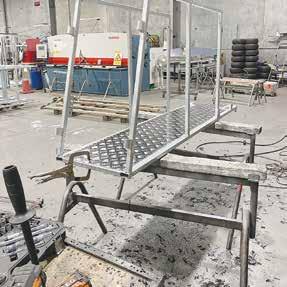
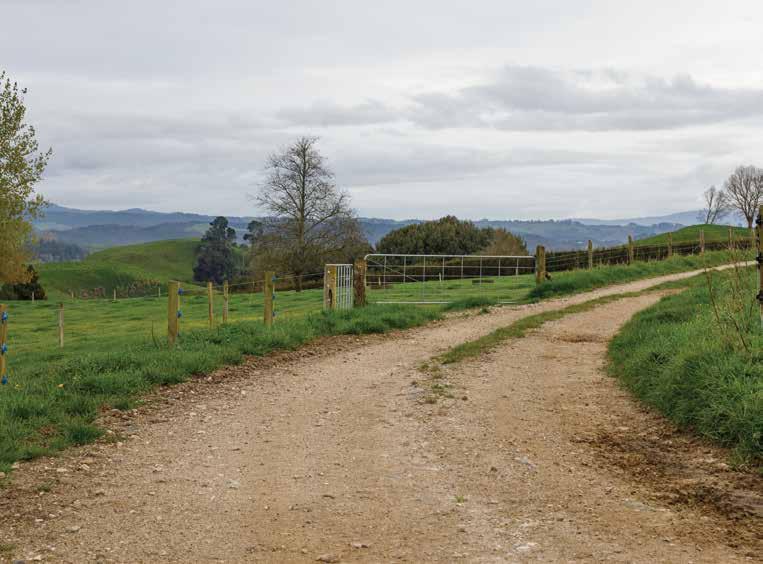


CAN-AM IS pushing the boundaries of performance in its Outlander line-up of ATVs with the launch of the new 850 and 1000R models, said to offer industry-leading horsepower, increased suspension travel and refined handling.
The 2025 Can-Am Outlander 850 and 1000R are equipped with a new double-overhead camshaft, 999cc V-twin Rotax engine, making the Outlander 1000R the first ATV with triple-digit horsepower, at 101hp.
The Outlander 850 also offers impressive power at 82hp. Both
models include Work, Standard and Sport ride modes, optimising power delivery and performance for the task at hand.
Both models feature an all-new continuously variable transmission (CVT) that delivers smooth power to the ground, improves torque and reduces maintenance requirements.
The latest pDrive primary clutch is paired with a new dual-rollerdriven pulley, said to offer instant response and excellent reliability.
The Outlander features a new suspension configuration with wide, arched A-arms front and rear, allowing for enhanced vehi-

cle dynamics, including an improved attack angle for smooth obstacle and ditch crossing.
Front suspension travel has increased by 1.6 inches to 10.8 inches, while rear suspension has
increased by 2.1 inches to 12 inches of travel, said to offer superior performance and comfort,
along with additional ground clearance.
Complementing the updated suspension, the steering geometry is also revised, increasing high-speed stability, steering precision and turning radius, while a high-strength steel frame enhances durability and rigidity, while decreasing weight, with a full-length skid-plate providing protection to the underside of the machine.
The 1000R also features a new four-disc system for improved braking control, using new metallic brake pads and a new front brake lever with optimised ergonomics.
When it comes to
WITH ONGOING ‘noise’ to reduce herbicides, many manufacturers have been introducing a wide range of options for mechanical weed control.
Many farmers and growers are realising that early intervention can have beneficial results in the new crop, so are turning their attention to effectively dealing with stubble left from the previous crop. Lemken’s Rubin 10 compact disc harrows are said to ensure intensive mixing of soil and regrowth, even at shallow working depths and in difficult conditions.
The basic version of the headstock-mounted Lemken Rubin 10 MR is available in a rigid version with a working width of up to 4 metres. The series continues to feature proven equipment and technology. The semi-mounted Rubin 10 TF is available with working widths of 4 to 7m and now offers several new innovative features.
The toolbar spacing has been increased by 150mm to 1350mm to
Lemken’s Rubin 10 compact disc harrows are said to ensure intensive mixing of soil and regrowth.
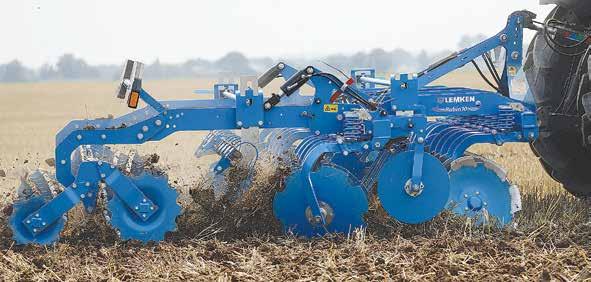
help ensure that organic matter settles further after the first row of discs, improving the cutting and mixing effect of the second row of discs, while also reducing the risk of blockages, even when operating in paddocks with large amounts of organic matter.
work, the Outlander continues to impress with a class-leading towing capacity of 1830 pounds (830kg) and a heavy-duty two-inch hitch receiver. Meanwhile, restyled components include front and rear LED lights with a four-point design, a centralised exhaust with an aluminium muffler tip, new wheel designs and integrated front and rear bumpers.
A new 10 litre rear LinQ removable storage box and 30 litres of front dropdown storage offer plenty of room for tools and supplies, while some packages feature a cell phone storage compartment with a USB charging port.
are pressed into the soil, where they are better cut and mixed by the disc section.
Adjustment allows the tines to be used in the drag or grip position to vary the intensity of cultivation.
The cutting roller offers a new option that is particularly useful for canola or sunflower crops, using the six blades to cut and shred the organic matter before the disc section takes over.
The helical shape of the cutting roller ensures smooth operation, while the open design prevents any blockages.
At the front of the main frame, a levelling tine section and a leading cutting roller have been introduced for the Rubin 10 TF in addition to the familiar straw harrow. In situations where straw is left as organic matter, the self-regulating straw harrow helps distribute lumps left by harvesting or baling into the disc section in a controlled manner, ensuring that the straw is incorporated more evenly across the field.
Using the levelling tine section from the Heliodor series of compact disc harrows, when the 10 TF is used for seedbed preparation, large clods
To enable farmers to configure the Rubin for differing situations, the company is introducing a quickchange roller system for both the 10 MR and TF series, allowing switches between different single and double rollers, quickly and with even less effort. Rubin 10 MR and TF will replace the existing versions from 2025.
– Mark Daniel
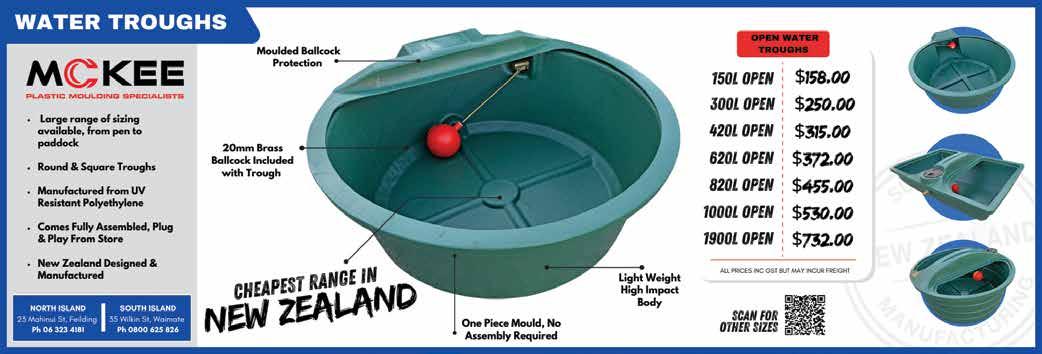
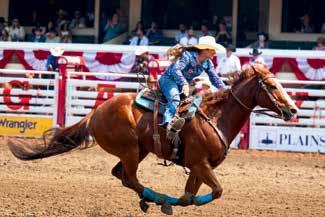

Escorted Tours
Jul 5th, 2025, 16 Days
Embark on a 16-day adventure through the heart of Canada's stunning landscapes and vibrant culture.
Experience the thrill of the Calgary Stampede - world-class rodeo action and the Chuckwagon event.
Indulge in luxury aboard the Rocky Mountaineer Train from Banff to Vancouver, passing through the majestic Continental Divide. Discover the natural

